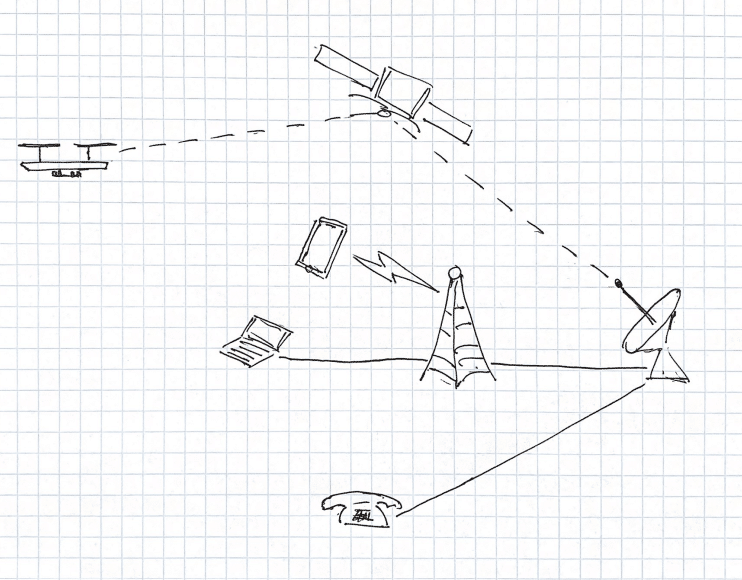Air Traffic Management (ATM) voice communication systems that utilize costly Time Division Multiplexing (TDM) circuits can be migrated to use Voice over Internet Protocol (VoIP) technology for lower cost and maintenance. The European Organization for Civil Aviation Equipment (EUROCAE) has defined ED-137 standards for air-ground and ground-ground communications. This allows end users to select products adhering to these standards from different vendors instead of relying on a single-sourced custom solution and still be confident of meeting operational and interoperability requirements. The Single European Sky ATM Research (SESAR) initiative, the International Civil Aviation Organization (ICAO) Doc 9896, and the Federal Aviation AdministrationVoice over IP Communication Enterprise (VoICE), cemented ED-137 as the future worldwide standard for the use of VoIP in Aviation and Air Traffic Management. But the uses of ED-137 do not end at aviation, they extend to numerous radio over IP use cases, including UAVs and other unmanned vehicles, rail, law enforcement, shipping and more.
ED137 Air Traffic Management Software
VOCAL has implemented an air traffic management software radio solution that complies with ED-137 1B and 1C standards. It is ideally suited for ATM radio manufacturers/system integrators looking for software to complement their hardware/software offerings. Vendors designing embedded GRS equipment will find VOCAL’s Radio over IP (ROIP) software as well as our Analog over IP (AoIP)/RoIP Reference Design invaluable for optimized time to market, offering great out of the box support for a variety of use cases, but with the flexibility of customization that all VOCAL products can offer. Yet the same base software libraries and APIs can be configured and deployed to create a Voice Communication System/Controller Working Position (VCS/CWP) and only those features needed can be selected. This allows for small footprint installations and efficient use of processing resources, minimizing capital costs.

ED-137 Supported Features
• Best Signal Selection (BSS)
• Climax time delay (CLD)
• Remote Radio Control single frequency (RRC single)
• Remote Radio Control paired frequency (RRC paired)
• Request for Measurement (RMM)
• Request for Measurement Answer (RMM MAM)
• WG67 key-in package
• Permissions Lists
• Linked Sessions
• SELCAL tones
• Multicast of aircraft audio to multiple VCSs
• Summation of multiple VCS audio streams to radio
• Prioritization of VCS audio streams

VOCAL’s software internal architecture provides the ability to build multi-functional products through the partitioning of IP bandwidth and separation of hardware interfaces. For instance, running ED-137 air-ground software connected to radios on some channels in conjunction with ground-ground communication connected to telephony equipment on other channels. Each external interface has its own distinct addressing, allowing for parallel execution and co-existence. Reliability, scalability and interoperability are paramount in systems that rely on ED-137, and our systems excel in these areas. VOCAL systems are used every day worldwide, across the entire spectrum of communications, from subsea to space, as part of critical infrastructure systems.
VOCAL software can run on multiple operating systems including its own LANsEND embedded kernel and can be built to run on a wide variety of computing platforms. It can be configured as a standalone product or incorporated into another application as a library.
The ED-137 module provides a flexible programming API for controlling, monitoring, and configuring all communication aspects. The API provides easy access to manipulate the RTP headers and receive updates for SIP, SDP, and RTP changes. An easy-to-use web interface is standard on our standalone solutions as is a command line interface for performing quick routine debugging and configuration tasks. If it is not customization, but a more turn key commercial off-the-shelf (COTS) solution that is needed, VOCAL has a variety of ED-137 solutions that fit the bill, from embedded systems to high density servers.
The NATO Standardization Office has published AComP-5634 “IP Access to Half Duplex Radio Networks” or IOP-HD, also referenced as STANAG 5634, which uses ED-137b as a mechanism to allow IP networks of one nation to access half-duplex Radio Networks of another nation.
VOCAL’s ED-137 radio solution is optimized for performance on both standard X86/X64 architectures as well as DSP and RISC architectures from TI, ADI, ARM, AMD, Risk-V, Intel and other leading vendors. Custom designs are also available for our clients. Contact us for a demo and to discuss your specific ED-137 radio application requirements.


VOCAL’s optimized software is available for the following platforms. Please contact us for specific satellite solutions and supported platforms and performance data.